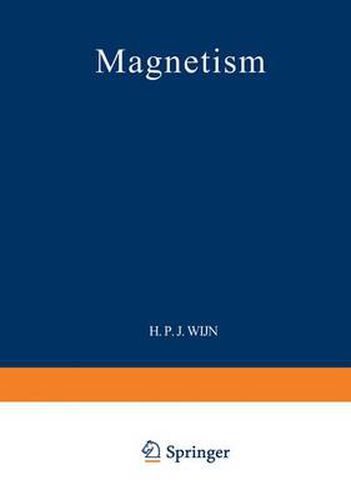Readings Newsletter
Become a Readings Member to make your shopping experience even easier.
Sign in or sign up for free!
You’re not far away from qualifying for FREE standard shipping within Australia
You’ve qualified for FREE standard shipping within Australia
The cart is loading…






This title is printed to order. This book may have been self-published. If so, we cannot guarantee the quality of the content. In the main most books will have gone through the editing process however some may not. We therefore suggest that you be aware of this before ordering this book. If in doubt check either the author or publisher’s details as we are unable to accept any returns unless they are faulty. Please contact us if you have any questions.
13 17 has to contain at least 10 spins at a temperature of 1 oK to obtain useful results 10 11 as compared with claims of 10 to 10 spins for the modern resonance saturation techniques under equivalent circumstances. This enormous difference can be traced back to two causes: the ratio of the quality factors of the resonant cavity 4 (‘ 1 0 ) and the coils used at audio and sub-audio frequencies (;S 1) and the ratio of the resonance and relaxation absorption coefficients (oc X ) that are actually measured. Comparing (4. 25) with (5. 5 …8) one finds that this last factor is of the orderofHIL1 H, the quotient of the external field and the linewidth of the resonance 2 3 line. This ratio is of the order 10 for concentrated samples, to 10 for diluted samples. Literature. Steady state saturation techniques. ESCHEN FELDER, A. H. , and R. T. WEIDNER: Phys. Rev. 92, 869 (1953). BOLGER, B. : Proc. Koninkl. Ned. Akad. Wetenschap B 62,348 (1959); - Thesis Leiden 1959. Pulse saturation techniques. GIORDMAINE, J. A. , L. E. ALSOP, F. R. NASH, and C. H. TOWNES: Phys. Rev. 109, 302 (1958). DAVIS jr. , F. C. , M. W. P. STRANDBERG, and R. L. KVHL: Phys. Rev. 111, 1268 (1958). BOWERS, K. D. , and W. B. MIMS: Phys. Rev. 115, 285 (1959). DREWES, G. W. J. : Thesis Leiden 1967. Other resonance techniques.
$9.00 standard shipping within Australia
FREE standard shipping within Australia for orders over $100.00
Express & International shipping calculated at checkout
This title is printed to order. This book may have been self-published. If so, we cannot guarantee the quality of the content. In the main most books will have gone through the editing process however some may not. We therefore suggest that you be aware of this before ordering this book. If in doubt check either the author or publisher’s details as we are unable to accept any returns unless they are faulty. Please contact us if you have any questions.
13 17 has to contain at least 10 spins at a temperature of 1 oK to obtain useful results 10 11 as compared with claims of 10 to 10 spins for the modern resonance saturation techniques under equivalent circumstances. This enormous difference can be traced back to two causes: the ratio of the quality factors of the resonant cavity 4 (‘ 1 0 ) and the coils used at audio and sub-audio frequencies (;S 1) and the ratio of the resonance and relaxation absorption coefficients (oc X ) that are actually measured. Comparing (4. 25) with (5. 5 …8) one finds that this last factor is of the orderofHIL1 H, the quotient of the external field and the linewidth of the resonance 2 3 line. This ratio is of the order 10 for concentrated samples, to 10 for diluted samples. Literature. Steady state saturation techniques. ESCHEN FELDER, A. H. , and R. T. WEIDNER: Phys. Rev. 92, 869 (1953). BOLGER, B. : Proc. Koninkl. Ned. Akad. Wetenschap B 62,348 (1959); - Thesis Leiden 1959. Pulse saturation techniques. GIORDMAINE, J. A. , L. E. ALSOP, F. R. NASH, and C. H. TOWNES: Phys. Rev. 109, 302 (1958). DAVIS jr. , F. C. , M. W. P. STRANDBERG, and R. L. KVHL: Phys. Rev. 111, 1268 (1958). BOWERS, K. D. , and W. B. MIMS: Phys. Rev. 115, 285 (1959). DREWES, G. W. J. : Thesis Leiden 1967. Other resonance techniques.